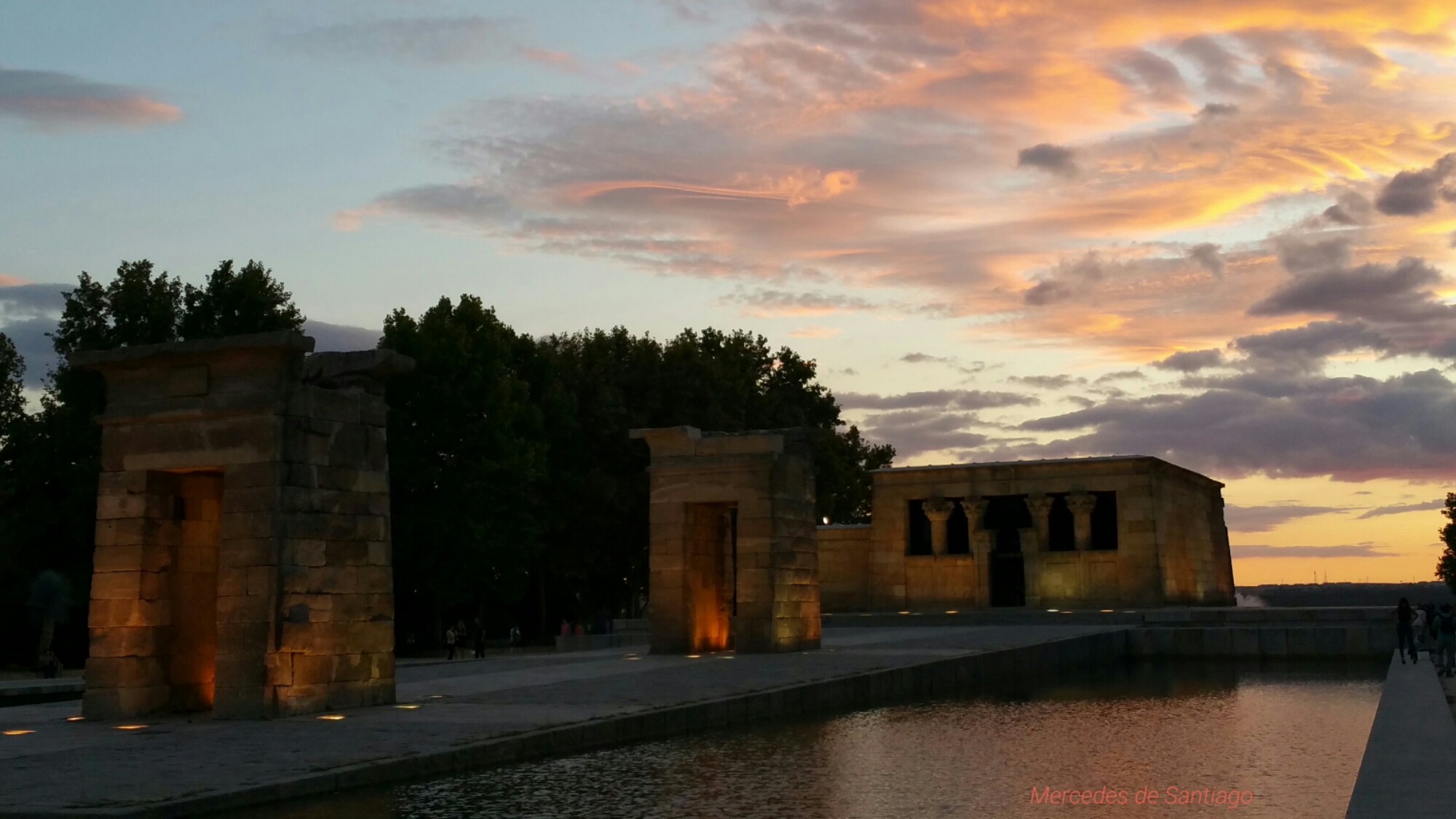
«Según sostiene la Real Academia de la Historia, el templo fue fundado en la Baja Nubia -región atravesada por el río Nilo entre Asuán, en Egipto, y Jartum, en Sudán- 200 años antes de Cristo. El monumento, que fue ordenado construir por el rey kushita Adijalamani de Meroe, estaba dedicado al dios Amón de Debod, «padre de todos los vientos», y a Isis de Filé, «diosa de la maternidad». Posteriormente, fue embellecido y reformado por los faraones de la dinastía ptolemaica.
En el año 30 a. C. Roma conquistó Egipto tras la victoria de Octavio Augusto sobre Marco Antonio y Cleopatra. El emperador Augusto añadió al santuario un «mammisi» o «capilla donde nacen los dioses», y más adelante el Imperio romano continuó la ampliación y renovación del edificio hasta que en el 635 d. C. se puso fin al culto pagano en la Baja Nubia. El templo fue clausurado y abandonado, y Occidente se olvidó de Egipto y de Nubia hasta el siglo XIX. Para entonces, nómadas, cristianos y musulmanes ya habrían pasado por el santuario.»
The Temple of Debod is one of the historical treasures of Madrid, given by the Egyptian Government to Spain, after the aid given for the construction of the Aswan Dam.
The Temple was built in the Lower Nubia -Egyptian region crossed by the Nile River between Assuan (Egypt) and Jartum (Sudan)- 200 years BC under orders of the Kushite King Adijalamani of Meroe. It was dedicated to the god Amon of Debod, «father of all winds», and to Isis de Phile, «goddess of motherhood». It was embellished and reformed by the Ptolemaic Pharaohs.
In the year 30 BC, Rome conquered Egypt after the victory of Octavius Augustus over Cleopatra and Marco Antonio. The emperor Augustus added a «mammisi» (chapell where the gods are born) to the sanctuary and, after that, the Roman Empire continued enlarging and renovating the temple till the 635 AD when the pagan rites where ended in the Lower Nubia. The temple was closed and then abandoned and the Western world forgot about Egypt and Nubia till the XIXth century. By then, nomads, Christians and Muslims had already treaded the sanctuary.
Esta entrada puede leerse también en Substack.
